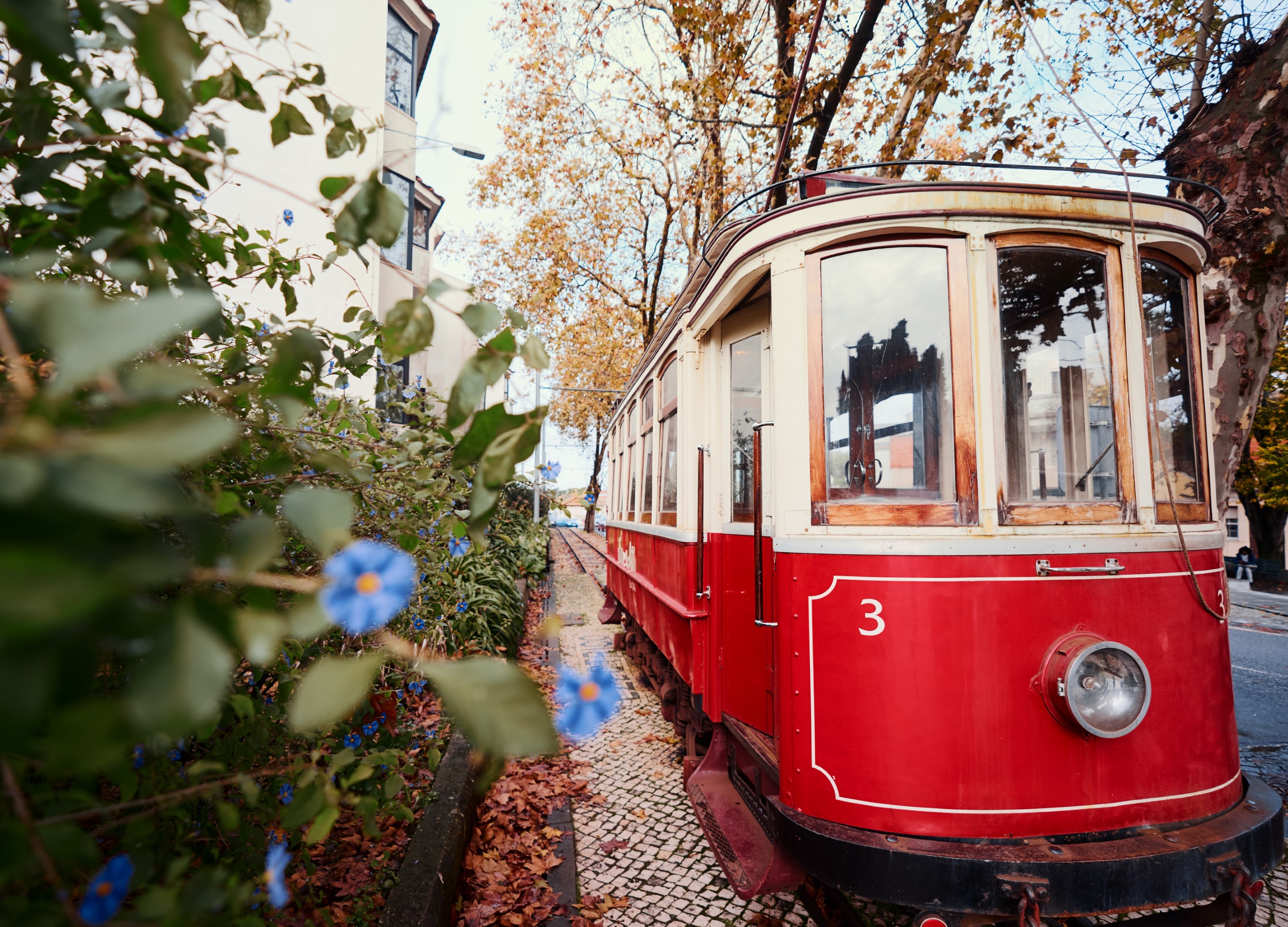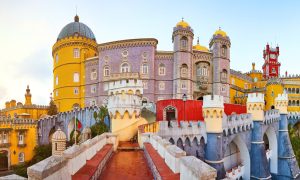In the age of high-speed travel and modern conveniences, there’s something deeply nostalgic about stepping onto a vintage tram and gliding along a scenic route at a leisurely pace. In Sintra, a town already brimming with old-world charm, you can experience exactly that on the Eléctrico de Sintra, an enchanting tramway that connects the historic town to the coastal village of Praia das Maçãs. This charming relic from a bygone era offers more than just a ride—it’s a journey through time, past breathtaking landscapes and into the heart of Portugal’s golden age of rail.
A Glimpse into History
The Sintra tramway, affectionately known as the Eléctrico de Sintra, dates back to 1904, when it first began operation. Conceived as a means to transport visitors and locals from the cool, misty hills of Sintra to the sun-kissed beaches along the Atlantic, the tram soon became a beloved part of the town’s culture.
The tramway’s original line stretched over 26 kilometers, connecting Sintra’s bustling town center with Colares, Azenhas do Mar, and Praia das Maçãs. For decades, the tram served as the primary mode of transportation between these areas, whisking passengers through a picturesque landscape of forests, vineyards, and coastal villages.
Though the line was closed in 1974, the tram’s significance to the local community was never forgotten. Thanks to dedicated restoration efforts, the tram was brought back into operation in the 1980s, albeit on a shorter route, and today it remains a nostalgic link between Sintra’s past and present.
Riding the Tram: A Journey through Sintra’s Countryside
Boarding the Eléctrico de Sintra feels like stepping into a different era. The beautifully restored wooden trams, painted in bright red and cream, have an undeniable vintage allure, complete with wooden benches, brass fittings, and open windows. As you settle in, the tram’s bell rings, and with a gentle lurch, you begin your journey.
The tram follows a 13-kilometer route from Estefânia in Sintra to Praia das Maçãs, winding its way through the scenic countryside at a relaxed pace. The journey takes approximately 45 minutes, allowing you to soak in the sights and sounds of the surrounding landscape. Along the way, you’ll pass charming villages like Colares, famous for its vineyards and Colares wine, and catch glimpses of the dramatic Sintra Mountains in the distance.
The route is lined with tall pine trees, rolling hills, and traditional Portuguese homes, their red-tiled roofs peeking out from between the greenery. As the tram descends toward the coast, the air becomes fresher, carrying the salty scent of the Atlantic Ocean. For those riding on a sunny day, the sight of Praia das Maçãs—with its golden sands and deep blue waters—at the end of the journey is nothing short of magical.
The Perfect Blend of History and Leisure
The Eléctrico de Sintra is more than just a charming throwback; it’s a convenient way to explore the stunning region that lies between the hills of Sintra and the coast. For visitors looking to experience the best of both worlds—Sintra’s UNESCO-listed palaces and the relaxed beaches of the Atlantic—this tram offers an unforgettable way to travel.
One of the highlights of the journey is the chance to stop in Colares, a village known for its wine production and peaceful atmosphere. Wine enthusiasts can visit one of the local wineries, such as the Adega Regional de Colares, to sample the region’s unique wines made from Ramisco and Malvasia grapes. Or, for a more laid-back experience, explore the village’s traditional shops and cafes before continuing on to the coast.
The tram line ends at Praia das Maçãs, a lively seaside village that’s perfect for a day by the beach. The town takes its name from the apple orchards that once lined the nearby river, and its wide sandy beach is a popular spot for both locals and visitors looking to escape the summer heat. You can enjoy fresh seafood at one of the beachside restaurants, relax in the sun, or even take a refreshing dip in the Atlantic.
For those with more time, the village of Azenhas do Mar—a cliffside gem with whitewashed houses cascading down toward the ocean—is just a short drive away. It’s a picture-perfect spot that’s well worth the visit, offering panoramic views and a glimpse of traditional coastal life.
Practical Information
The Eléctrico de Sintra runs seasonally, typically operating between late spring and early autumn. While the schedule varies, trams usually run several times a day on weekends, making it easy to incorporate the journey into a leisurely day of exploring the region. Tickets are reasonably priced, making the tram both an affordable and enjoyable way to see Sintra’s stunning surroundings.
For the latest schedule and ticket prices, it’s a good idea to check with Sintra’s tourism office or inquire locally, as operations can sometimes change depending on the season.
A Timeless Journey Worth Taking
Riding the Eléctrico de Sintra is more than just a mode of transportation—it’s an experience that captures the essence of Sintra’s historic charm and natural beauty. Whether you’re a history buff, a nature lover, or simply looking for a relaxing adventure, this tram ride offers a unique way to explore the region at a slower, more meaningful pace.
As you rumble along the tracks, with the wind in your hair and the rhythmic clang of the tram’s bell in the background, it’s easy to see why this small, century-old tram has remained such a beloved part of Sintra’s identity. The Eléctrico isn’t just a ride—it’s a journey through time, offering a rare glimpse into a Portugal that still values the simple pleasure of a slow, scenic route. So, next time you find yourself in Sintra, be sure to hop aboard this charming relic and experience the magic of Sintra’s historic tram for yourself.





















